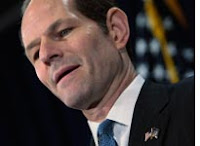 This is why I love CCF, which I blog about here a lot because they’re just such darn good providers in the knowledge business. This week they’re issuing a press release on the importance of a time use survey, with contemporary spin and flair–and an important message with policy application: “Save ATUS.” What’s ATUS you ask? Here’s a sneak peak at the release, courtesy of Virginia Rutter, who just sent it to me. Feel free to pass it on!:
This is why I love CCF, which I blog about here a lot because they’re just such darn good providers in the knowledge business. This week they’re issuing a press release on the importance of a time use survey, with contemporary spin and flair–and an important message with policy application: “Save ATUS.” What’s ATUS you ask? Here’s a sneak peak at the release, courtesy of Virginia Rutter, who just sent it to me. Feel free to pass it on!:
Making Time for Work and Family: Got Data?
For Family Social Scientists, the American Time Use Survey Provides Valuable Information on Work, Family, and How We Endure the Conflict between the Two
June 4, 2008 Chicago Il —- Mothers do more paid work—14 hours more—than they did 40 years ago. They do less housework—exactly 14 hours fewer—too. But they do 4 hours more of childcare than in the past. How do we know? Suzanne Bianchi, University of Maryland sociologist, and her colleagues used the American Time Use Survey (ATUS), a time diary study that has been collected by the Bureau of Labor Statistics since 2003.
Dads are stepping up in new ways too. Men have steadily increased their participation in housework and child care over the past 30 years. And contrary to claims of some earlier studies, dads who work less than full-time don’t use their extra time just to watch TV. Part-time worker dads do more housework (about an hour more) than full-time worker dads, and about 40 minutes more childcare. We know about these changes thanks to forthcoming work from Liana Sayer (Ohio State University) and Sanjiv Gupta (University of Massachusetts at Amherst) in which they analyzed the 2003-2005 ATUS.
But if women have given up 14 hours a week of housework and taken on 14 more hours of paid work, what else have they given up to put in 4 more hours of childcare? Here the news may be less rosy. It appears that social bonding with spouse, kin, and friends is being sacrificed to the higher standards for time with children. Bianchi and colleagues’ analysis of the ATUS reveals that, compared to 20 years ago, married working moms now spend less time with their spouse—while single moms spend less time with friends and family.
SCIENCE HELPS US KEEP UP WITH SOCIAL CHANGE
These facts illustrate the on-going revolution in how Americans spend their time—what they do at work, how men and women organize family schedules, and how children and teens spend their days. To understand changes in family life and to guide policy makers—and families themselves—about the best ways to adjust to new patterns of work and parenting, researchers collect such information. This in turn becomes the basis for news stories, advice columns and television programs that citizens rely on—and are hungry for.
The American Time Use Survey is one of those key resources. (For more information on ATUS visit http://www.bls.gov/tus/home.htm and www.saveatus.org.) As researcher Bianchi explains, “ATUS provides essential information about how Americans spend their time—time spent caring for children, cleaning the house, working for pay, and caring for sick adults.” We all rely on these jobs being done in order to keep our society running well: but it is vital for us to know how, when, and by whom they are done in our changing social world.
“The Council on Contemporary Families uses this kind of scientific research in order to understand the complex and changing dynamics of the family,” reports Evergreen State College Professor Stephanie Coontz, CCF’s Director of Research and Public Education. “Many CCF briefing papers and fact sheets rely on data from the time-use studies.” (A host of examples are at http://www.contemporaryfamilies.org/briefpapers.php.)
“The complexity of coordinating families’ work and school schedules with the need for health care, down time, cultivation of intimacy, and everyday chores presents new challenges to couples, parents, and children in the way they spend their days,” explains Coontz. “Changes in time use help us understand how families cope with modern stresses–and also what happens when they cannot cope. Right now, the economy is slowing down, but many families find themselves speeding up. Unless we keep on top of these changes, we cannot analyze what kinds of practical support and information families need. Making sure that the data continue to be collected is an issue that cuts across partisan divisions, uniting family researchers from many different points of view.”
For further information on the American Time Use Survey, visit http://www.bls.gov/tus/home.htm.
WELL DONE, CCF!
 For a good while now, blogger Melissa Silverstein has been keeping excellent track of women at the movies–as producers, directors, and audiences. And this week over at Women and Hollywood blog, Melissa writes:
For a good while now, blogger Melissa Silverstein has been keeping excellent track of women at the movies–as producers, directors, and audiences. And this week over at Women and Hollywood blog, Melissa writes:









